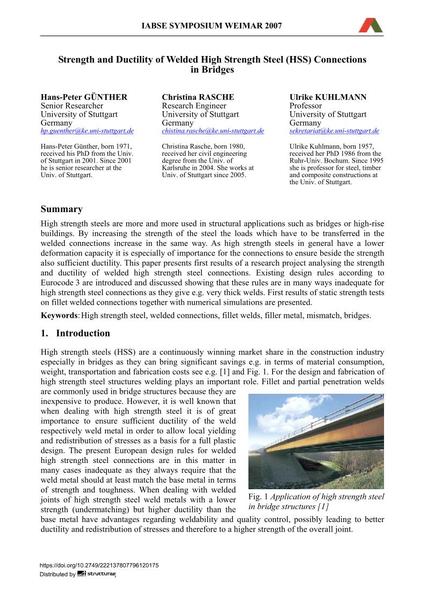Strength and Ductility of Welded High Strength Steel (HSS) Connections in Bridges

|
|
|||||||||||
Détails bibliographiques
| Auteur(s): |
Hans-Peter Günther
Christina Rasche Ulrike Kuhlmann |
||||
|---|---|---|---|---|---|
| Médium: | papier de conférence | ||||
| Langue(s): | anglais | ||||
| Conférence: | IABSE Symposium: Improving Infrastructure Worldwide, Weimar, Germany, 19-21 September 2007 | ||||
| Publié dans: | IABSE Symposium Weimar 2007 | ||||
|
|||||
| Page(s): | 178-179 | ||||
| Nombre total de pages (du PDF): | 8 | ||||
| Année: | 2007 | ||||
| DOI: | 10.2749/222137807796120175 | ||||
| Abstrait: |
High strength steels are more and more used in structural applications such as bridges or high-rise buildings. By increasing the strength of the steel the loads which have to be transferred in the welded connections increase in the same way. As high strength steels in general have a lower deformation capacity it is especially of importance for the connections to ensure beside the strength also sufficient ductility. This paper presents first results of a research project analysing the strength and ductility of welded high strength steel connections. Existing design rules according to Eurocode 3 are introduced and discussed showing that these rules are in many ways inadequate for high strength steel connections as they give e.g. very thick welds. First results of static strength tests on fillet welded connections together with numerical simulations are presented. |
||||
| Mots-clé: |
ponts
|
||||
